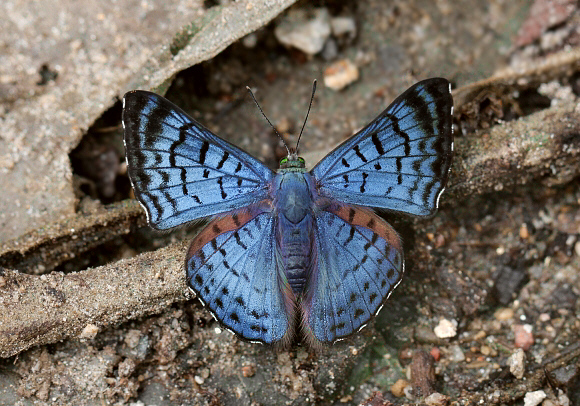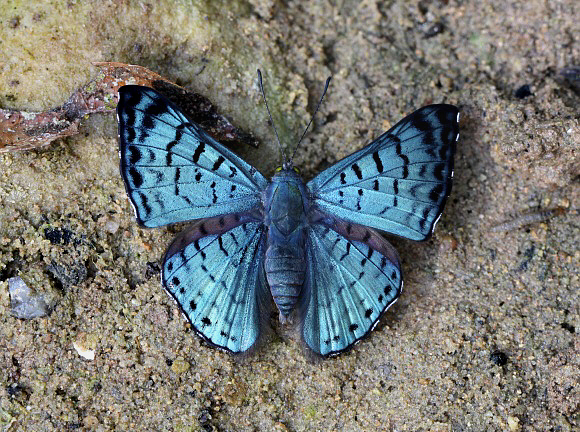 Lasaia moeros, male, Mariposa, Satipo, Peru – Adrian Hoskins
Lasaia moeros, male, Mariposa, Satipo, Peru – Adrian Hoskins
Introduction
The genus Lasaia contains 14 species, all of which are found exclusively in the neotropics. They are small butterflies, averaging about 30mm in wingspan. Males have extremely reflective wing scales, shimmering in metallic turquoise, blue or steely grey according to species. Females are rarely seen. They are generally a dull earthy brown colour. Both sexes have a similar pattern of black spots.
Lasaia moeros has more linear markings than other Lasaia species, and is a beautiful pale sky blue colour with no trace of green or turquoise.This species is confined to Peru and Bolivia.
Habitats
This species is found in rainforest and cloudforest habitats at altitudes between about 400-1200m on the eastern slopes of the Andes.
Lifecycle
The eggs are flattened, and resemble a pair of stacked pies. I have no other information regarding the lifecycle. The foodplant of the related Lasaia sula is Albizia ( Fabaceae ) so it is likely that other Lasaia species feed on related plants.
Adult behaviour
There appear to be no known specimens of the female of this species.
Males are rare, but sometimes encountered when imbibing mineral-rich moisture from pebbly riverbanks or forest tracks. They are only active in sunny weather, but tend to be found in places where dappled sunlight filters through to the ground, rather than on exposed river beaches.

Lasaia moeros, male, Satipo, Peru – Adrian Hoskins
